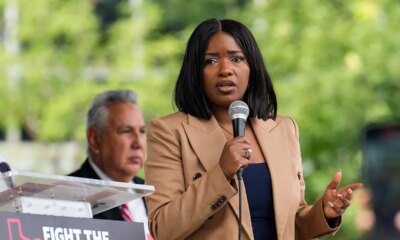Dear Wayne and Wanda,
I work with “Michelle.” We’ve gotten to know each other pretty well over the past few months, and I’ve found myself really drawn to her. We are part of the same large team and peers — meaning, it’s not like she’s my supervisor, or vice versa. She’s smart, funny, and we get along great. I’m stoked every time we get to partner up on a project because her work is amazing, and it sounds cheesy but we really do inspire each other. I think there’s a possibility that she might be interested in me too, but here’s the catch: I’m in Anchorage, she’s in Fairbanks.
I’ve been going back and forth on how to approach this. On one hand, I don’t want to come off too strong or make things awkward by suggesting that I travel to see her when we’re not even dating. On the other hand, I don’t want to miss the chance to get to know her better outside of work.
What do you think is the best way to ask her out without making her feel pressured or uncomfortable? Should I suggest a virtual date first, like a video chat over coffee or drinks? Or do you think it would be better to keep it light and casual, maybe suggesting we meet up if she’s ever in town, or if I find myself in her city for work or another reason?
I guess what I’m really asking is: How do I move forward in a way that respects her boundaries (and I have no idea what those are), but also lets her know that I’m genuinely interested in getting to know her better? I appreciate any guidance you can offer. Navigating this new territory is a bit daunting, but I really don’t want to let this opportunity slip by without at least trying. I’m not the most experienced with dating. I’ve always put career first. So I’m looking forward to hearing your thoughts.
Wanda says:
Anchorage to Fairbanks, eh? What’s 359 miles between friends and potentially more-than-friends? To be specific, it’s a six-plus-hour drive or a chunk of Alaska Airlines miles and a few hours of combined airports and flight times. Heck, I rarely drive south of Tudor Road unless I’m leaving town, so I get it. Distance can be daunting, especially in navigating a potential new connection.
Let’s assume, though, that you’re reading the room accurately here, and Michelle likes you back. She’s probably wondering the same things you are. How to spend time with you when you live hundreds of miles apart? How to initiate a hangout without freaking you out or creeping in on work boundaries? And what are your work boundaries? And do you like her too? Someone has to make a move here. Tag, you’re it.
Personally, I think a virtual date sounds super awkward. Might as well make it an agenda item after a staff meeting, you know? Since you both apparently travel between cities for your jobs, target the next time you’re both in the same physical spot, and ask her to join you for drinks after work — or dinner, or coffee — just something that involves only the two of you.
You’re overthinking this simple first date because you don’t live in the same city. But it’s no different than asking out a co-worker who lives down the road. The only difference is, if it goes well, then you have the adventure of navigating a long-distance relationship.
Wayne says:
Ah, love in the Golden Heart City … makes me feel all tingly. Oh wait, that’s my freezing extremities! Dip me in the hot springs ASAP!
OK, this isn’t business, it’s personal, so stop sitting at your laptop and waiting for her to drop a heart emoji over a witty Teams chat pun and get your lovelorn butt up to the Far North for a long weekend to check the temperature — of her feelings about you and the Interior weather forecast so you can pack/dress appropriately.
Plan your trip as if she’s not going to be involved because she might not be. Rent a car and get a room, make a schedule of activities that fit your style and the season: the museum, hot springs, northern lights and skiing, Midnight Sun and hiking, downtown partying and floating the Chena, whatever. Then, when everything’s together, tell her that you’re coming to town in a few weeks and would love to get her advice on your itinerary and if anything critical is missing … and that you’d also love to take her out to dinner at a place of her choosing so you can catch up.
That’s an easy way to strike up a conversation that isn’t about work, and you’ll also likely get a very solid vibe check from her response. She might rewrite your entire trip and want to play tour guide; she might make up an excuse about having to run her dog team and shoot you down entirely; she might meet you somewhere in between and catch you for coffee or lunch. You won’t know until you act and ask. You’ll feel relief in finally shooting your shot, get some clarity on her interest, and have good times in the Land of the Midnight Fun no matter what she decides.
[Wayne and Wanda: The date was great, but was it business or pleasure?]
[Wayne and Wanda: My budding romance has been a fantasy. How do I bring it into reality?]
[Wayne and Wanda: My co-workers’ gossipy, flirty behavior is driving me up our cubicle walls]
[Ask Sahaj: I don’t want advice from my friend who’s never been in a relationship]
[Wayne and Wanda: The person I’m dating lets her out-of-control dog run wild off leash, and it drives me nuts]

:quality(70)/cloudfront-us-east-1.images.arcpublishing.com/adn/UTLT6WFPPRDEFALTHNBAINDL7I.jpg?ssl=1)






































